Behavior Characteristics of Argon Bubbles on Inner Surface of Upper Tundish Nozzle during Argon Blowing Process
Abstract
:1. Introduction
2. Experiment Theory and Model Establishment
2.1. Experiment Theory
2.2. Establishment of Water Model of Argon Blowing in Tundish Nozzle
2.3. Experimental Scheme
3. Results and Discussion
3.1. Effect of Process Parameters on Distribution of Argon Bubbles on Inner Surface of Nozzle
3.2. Effect of Process Parameters on Velocity of Argon Bubbles near Inner Surface of Nozzle
3.3. Effect of Process Parameters on Distance from Bubble Chains to Inner Surface
4. Conclusions
Author Contributions
Funding
Acknowledgments
Conflicts of Interest
References
- Sambasivam, R. Clogging Resistant Submerged Entry Nozzle Design through Mathematical Modelling. Ironmak. Steelmak. 2006, 33, 439–453. [Google Scholar] [CrossRef]
- Yang, M.L.; Cheng, C.G.; Li, Y.; Lu, H.B.; Yan, J. Development of Control Technology and Clogging Mechanism for Tundish Nozzle in Continuous Casting. J. Iron Steel Res. 2017, 29, 773–780. (In Chinese) [Google Scholar]
- Deng, Z.; Zhu, M.; Zhou, Y.; Du, S.C. Attachment of Alumina on the Wall of Submerged Entry Nozzle during Continuous Casting of Al-Killed Steel. Metall. Mater. Trans. B 2016, 47, 2015–2025. [Google Scholar] [CrossRef]
- Trueba, L.; Peaslee, K.D.; Smith, J.D.; Karakus, M. Effect of Nozzle Base Material on the Rate of Clogging during the Continuous Casting of Aluminum-Killed Steels. Steel Res. Int. 2006, 77, 37–48. [Google Scholar] [CrossRef]
- Zheng, S.; Zhu, M. Study on Mechanism of Large Bubble Formation in Slab Continuous Casting Mould with Argon Blowing. Steel Res. Int. 2008, 79, 918–923. [Google Scholar] [CrossRef]
- Singh, V.; Dash, S.K.; Sunitha, J.S.; Ajmani, S.K.; Das, A.K. Experimental Simulation and Mathematical Modeling of Air Bubble Movement in Slab Caster Mold. ISIJ Int. 2006, 46, 210–218. [Google Scholar] [CrossRef] [Green Version]
- Kubo, N.; Ishii, T.; Kubota, J.; Aramaki, N. Two-phase Flow Numerical Simulation of Molten Steel and Argon Gas in a Continuous Casting Mold. ISIJ Int. 2002, 42, 1251–1258. [Google Scholar] [CrossRef]
- Chong, L.; Luo, Z.G.; Zhang, T.; Deng, S.; Wang, N.; Zou, Z.S. Mathematical Modeling of Multi-Sized Argon Gas Bubbles Motion and its Impact on Melt Flow in Continuous Casting Mold of Steel. J. Iron Steel Res. Int. 2014, 21, 403–407. [Google Scholar]
- Esaka, H.; Kuroda, Y.; Shinozuka, K.; Tamura, M. Interaction between Argon Gas Bubbles and Solidified Shell. ISIJ Int. 2004, 44, 682–690. [Google Scholar] [CrossRef] [Green Version]
- Li, Y.; Deng, A.; Li, H.; Yang, B.; Wang, E. Numerical Study on Flow, Temperature, and Concentration Distribution Features of Combined Gas and Bottom-Electromagnetic Stirring in a Ladle. Metals 2018, 8, 76. [Google Scholar] [CrossRef]
- Yin, Y.; Zhang, J.; Dong, Q.; Li, Y. Modelling on Inclusion Motion and Entrapment during the Full Solidification in Curved Billet Caster. Metals 2018, 8, 1–15. [Google Scholar] [CrossRef]
- Thomas, B.G.; Huang, X.; Sussman, R.C. Simulation of Argon Gas Flow Effects in a Continuous Slab Caster. Metall. Mater. Trans. B 1994, 25B, 527–547. [Google Scholar] [CrossRef]
- Liu, Z.; Li, B.; Jiang, M. Transient Asymmetric Flow and Bubble Transport inside a Slab Continuous-Casting. Metall. Mater. Trans. B 2014, 45, 675–697. [Google Scholar] [CrossRef]
- Kumar, D.S.; Rajendra, T.; Sarkar, A.; Karande, A.K.; Yadav, U.S. Slab Quality Improvement by Controlling Mould Fluid Flow. Ironmak. Steelmak. 2007, 34, 185–191. [Google Scholar] [CrossRef]
- Bai, H.; Thomas, B.G. Two Phase Flow in Tundish Nozzles during Continuous Casting of Steel. Mater. Process. Comput. Age 2000, 3, 85–99. [Google Scholar]
- Bai, H.; Thomas, B.G. Effects of Clogging, Argon Injection, and Continuous Casting Conditions on Flow and Air Aspiration in Submerged Entry Nozzles. Metall. Mater. Trans. B 2001, 32B, 707–722. [Google Scholar] [CrossRef]
- Ni, P.; Wang, D.; Jonsson, L.T.I.; Ersson, M.; Zhang, T.A.; Jonsson, P.G. Numerical and Physical Study on a Cylindrical Tundish Design to Produce a Swirling Flow in the SEN During Continuous Casting of Steel. Metall. Mater. Trans. B 2017, 48, 2695–2706. [Google Scholar] [CrossRef] [Green Version]
- Guan, P.; Jia, L.; Yin, L.; Tan, Z. Effect of Bubble Contact Diameter on Bubble Departure Size in Flow Boiling. Exp. Heat Transf. 2016, 29, 37–52. [Google Scholar] [CrossRef]
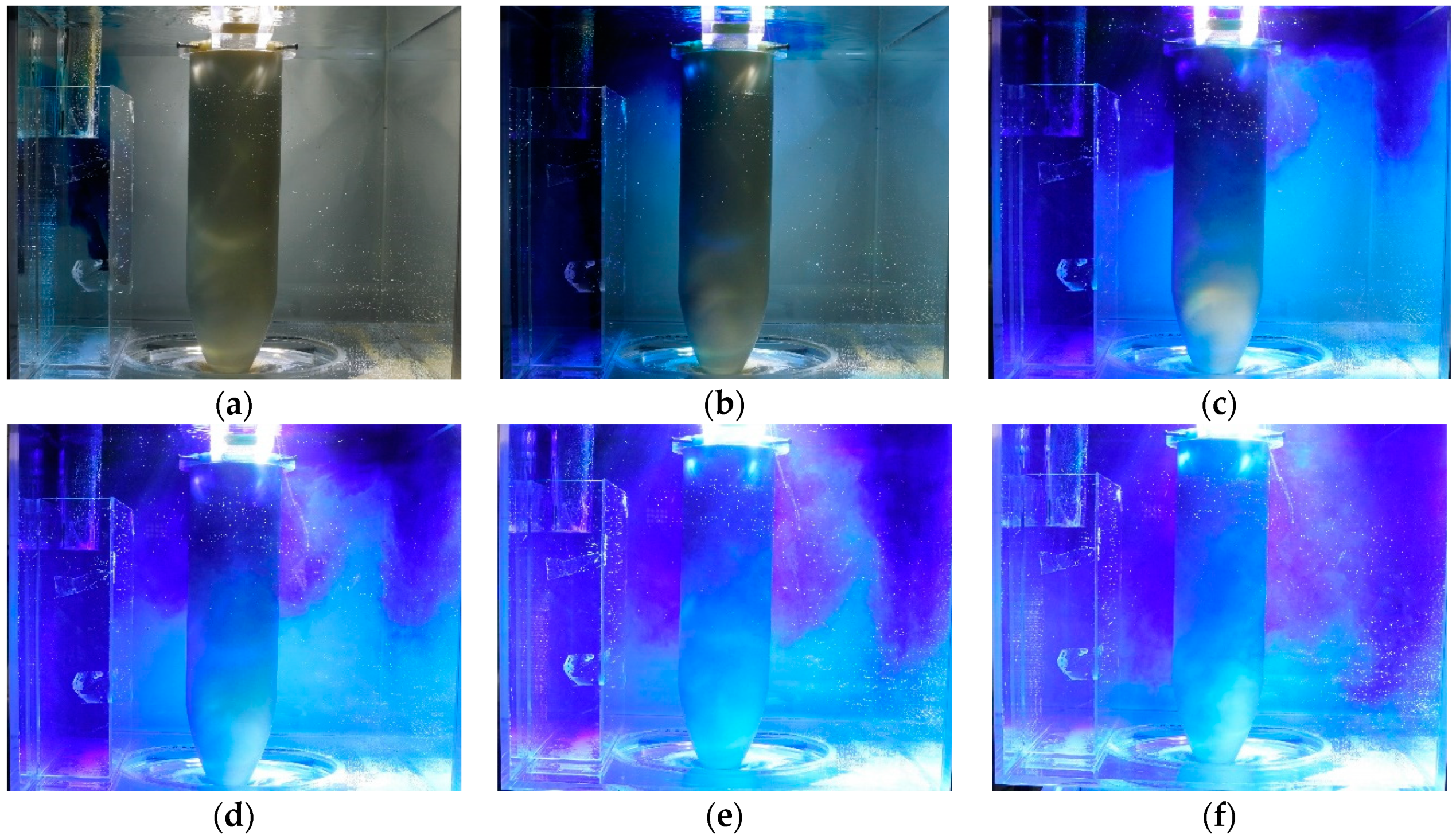
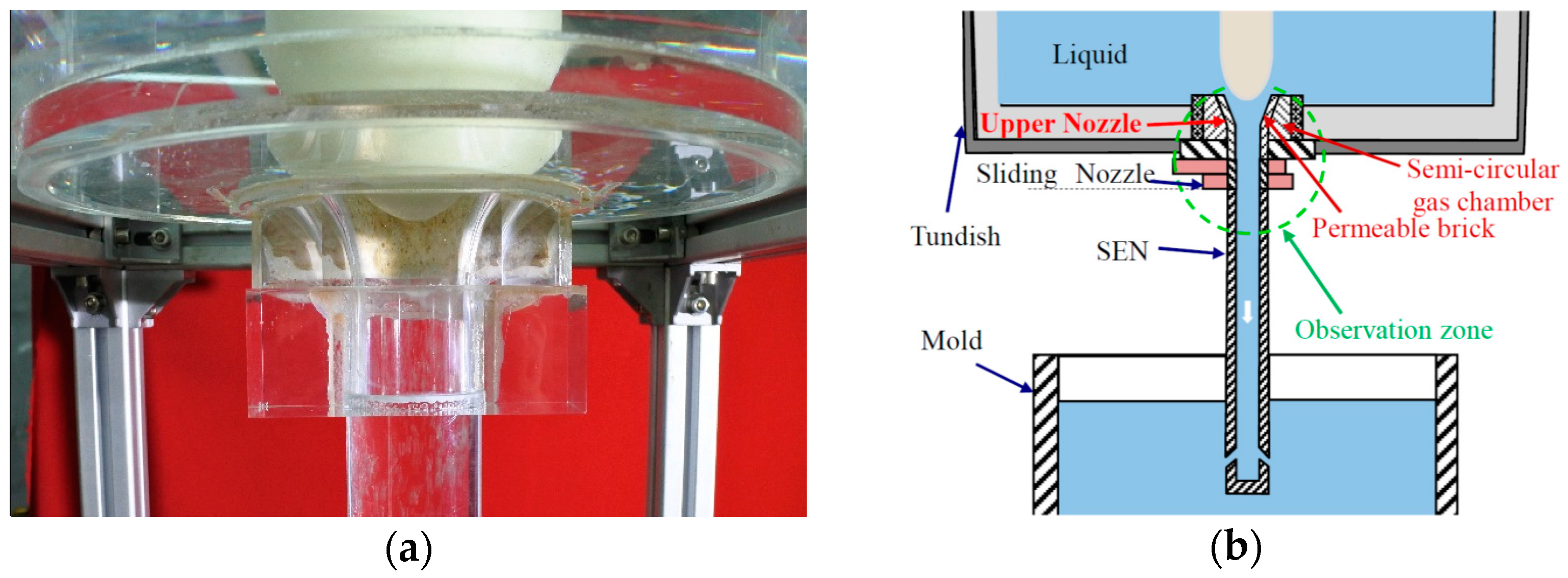
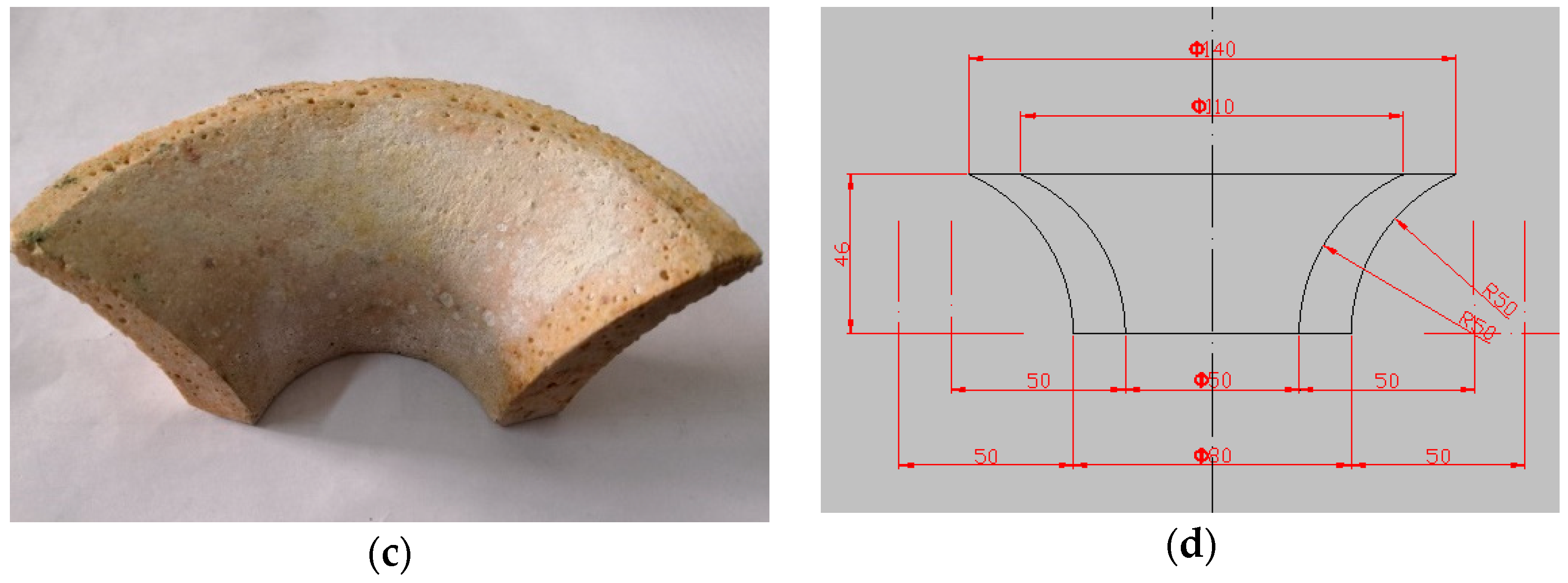
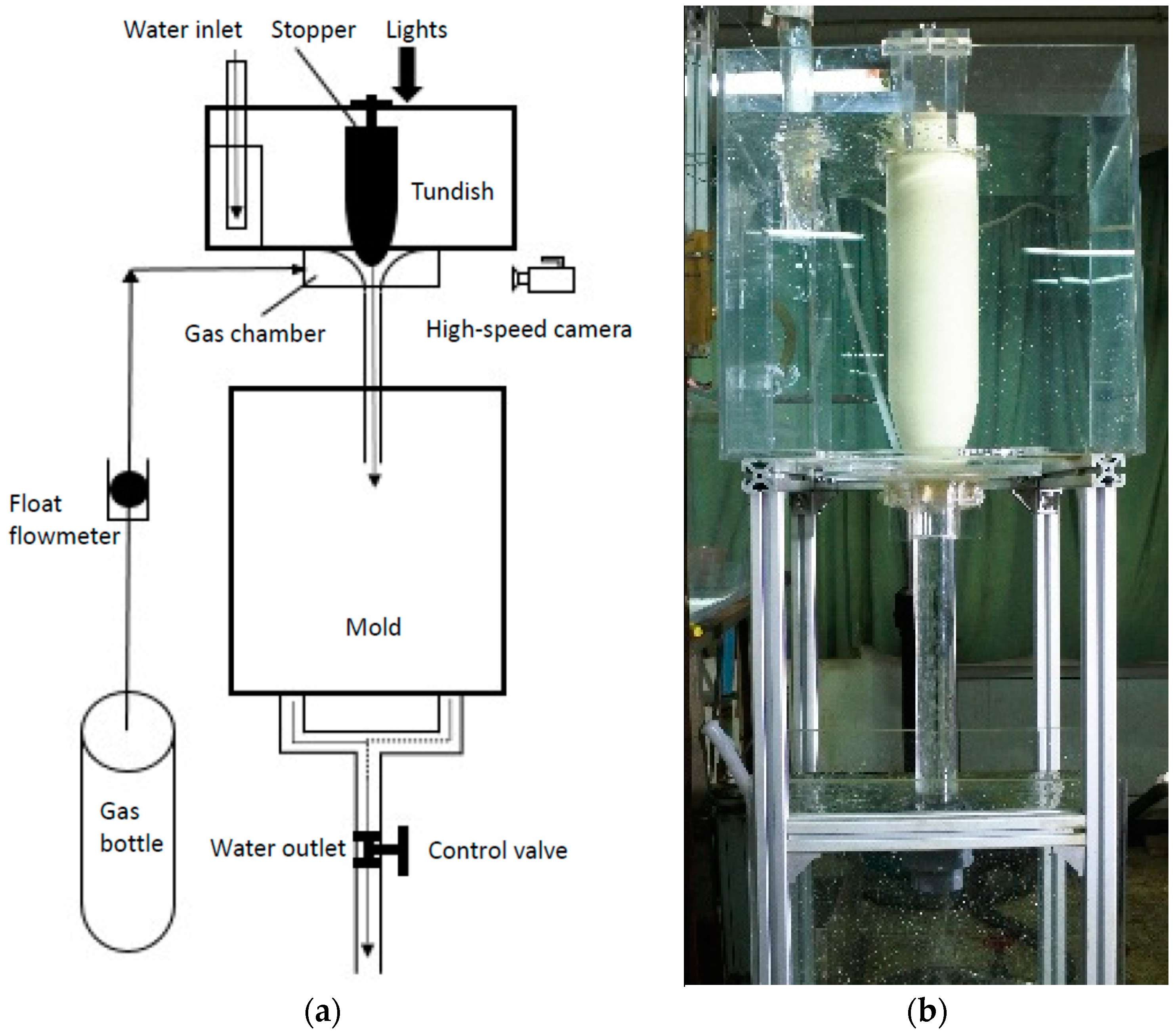
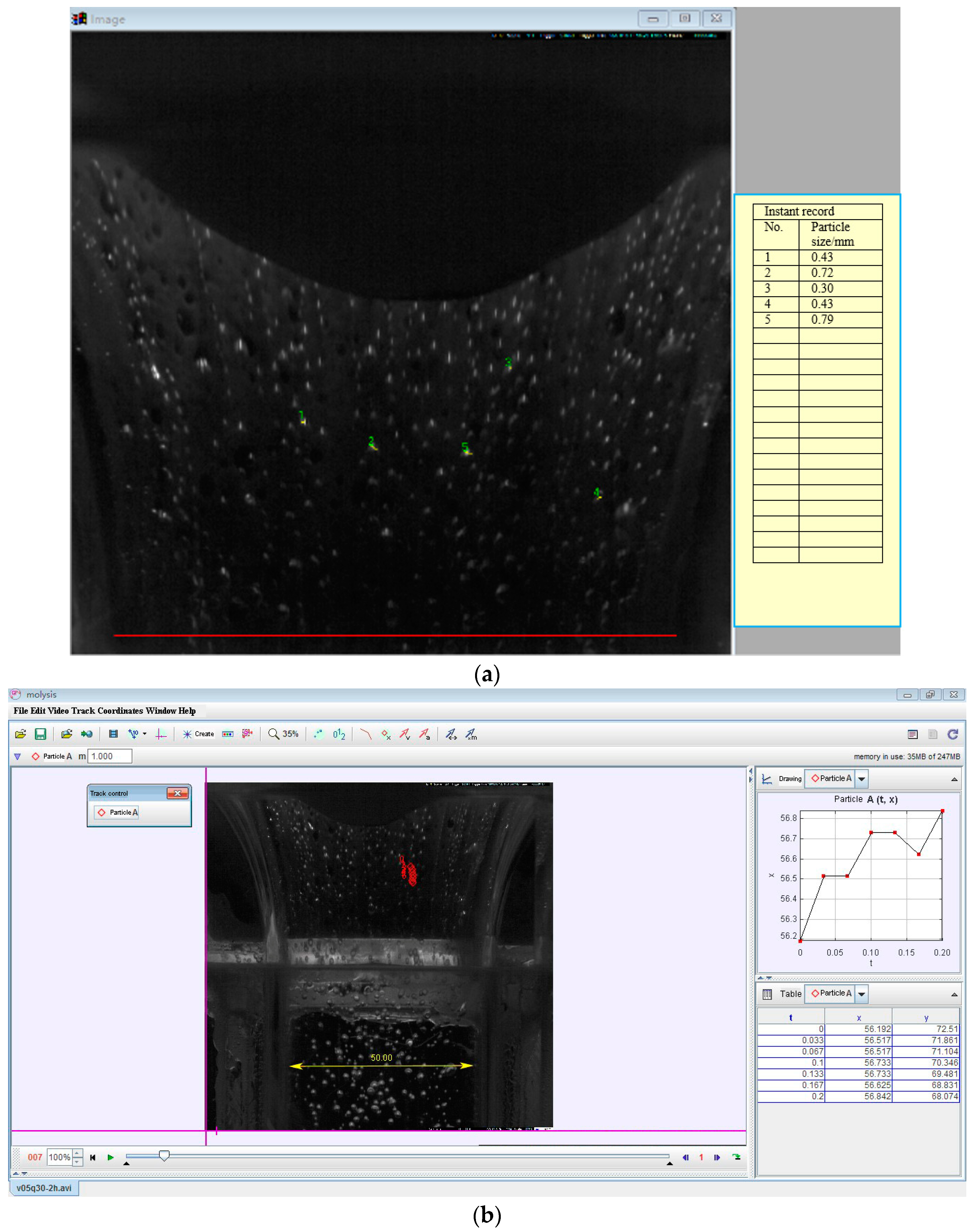
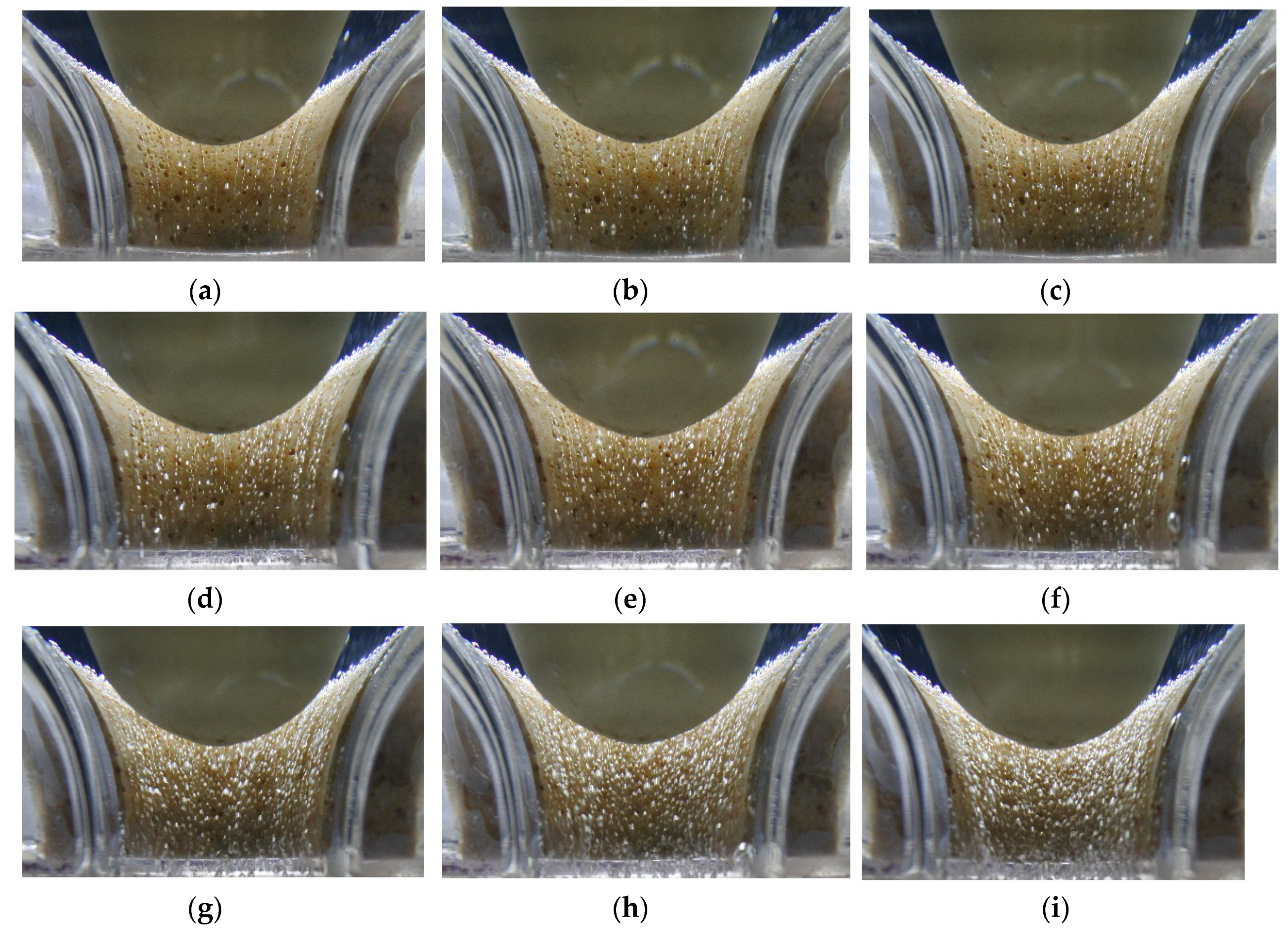


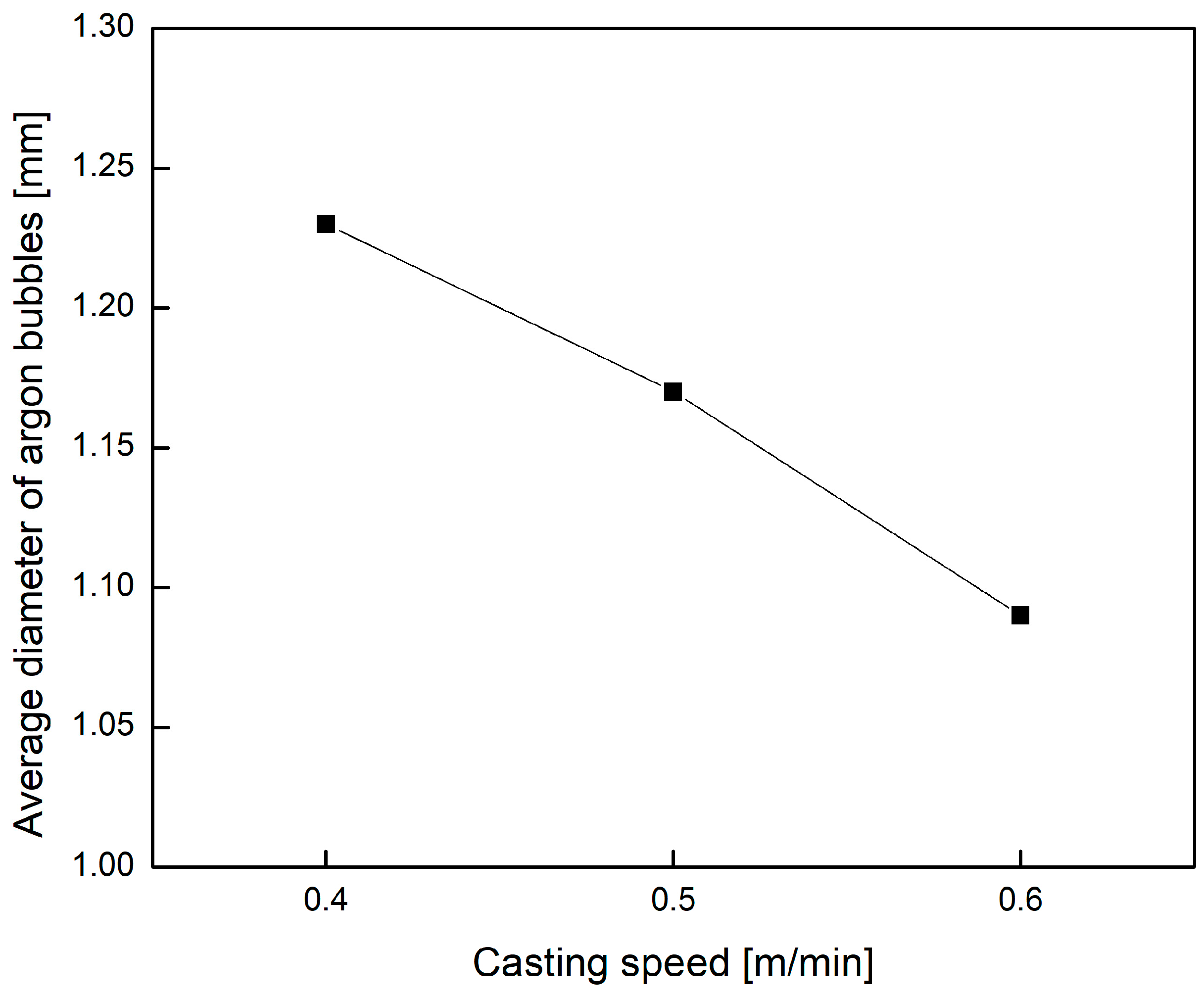
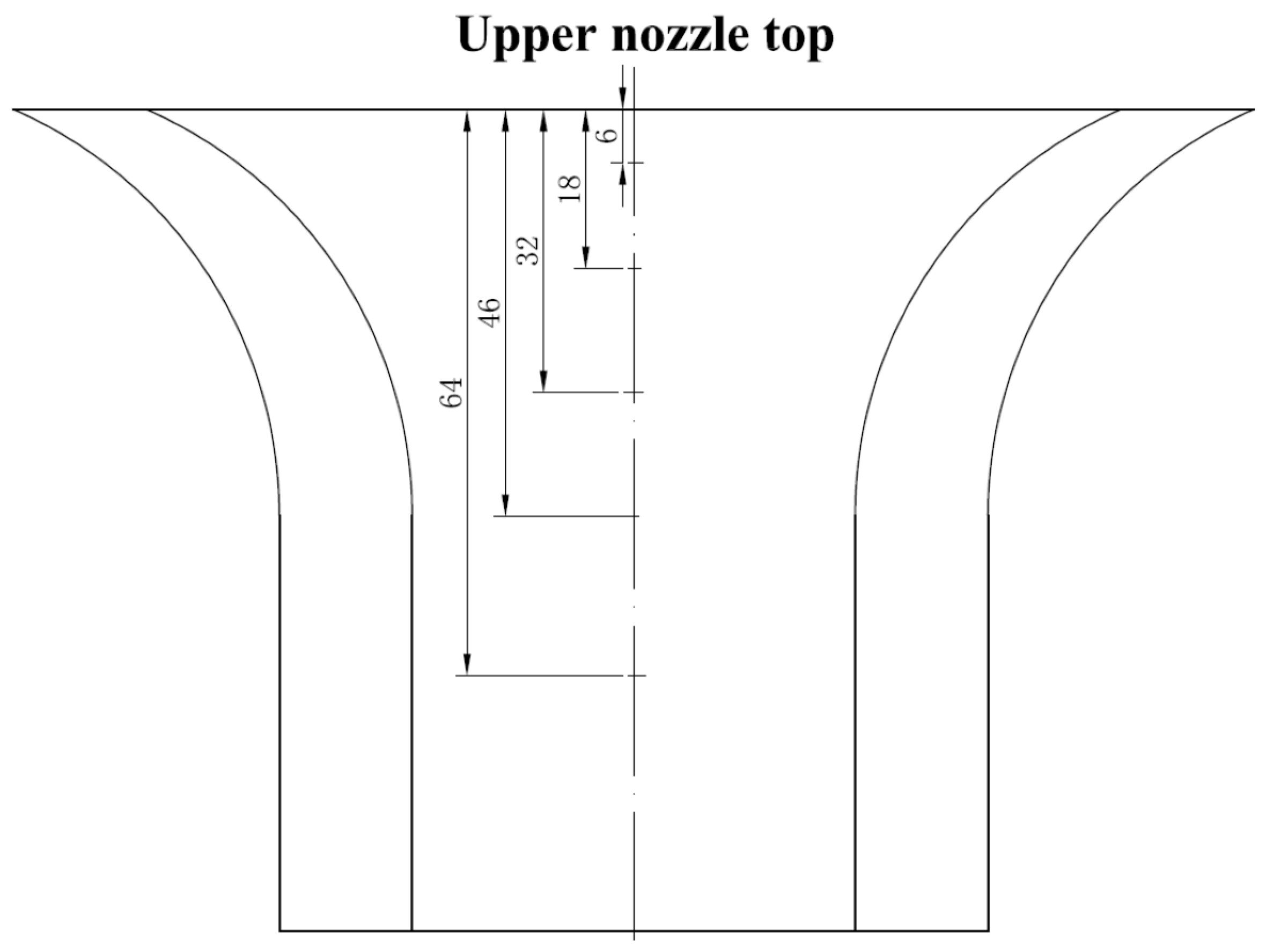
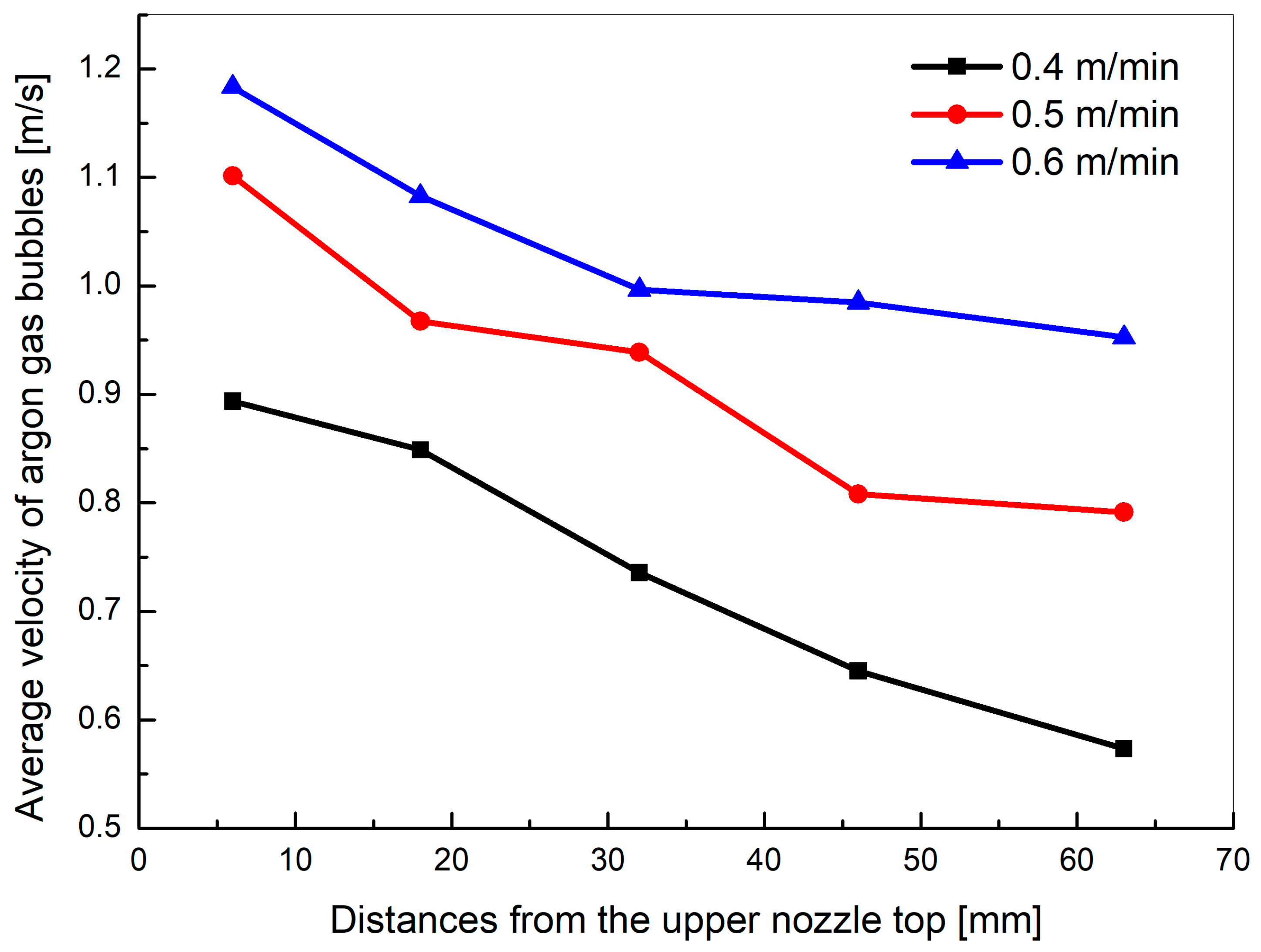
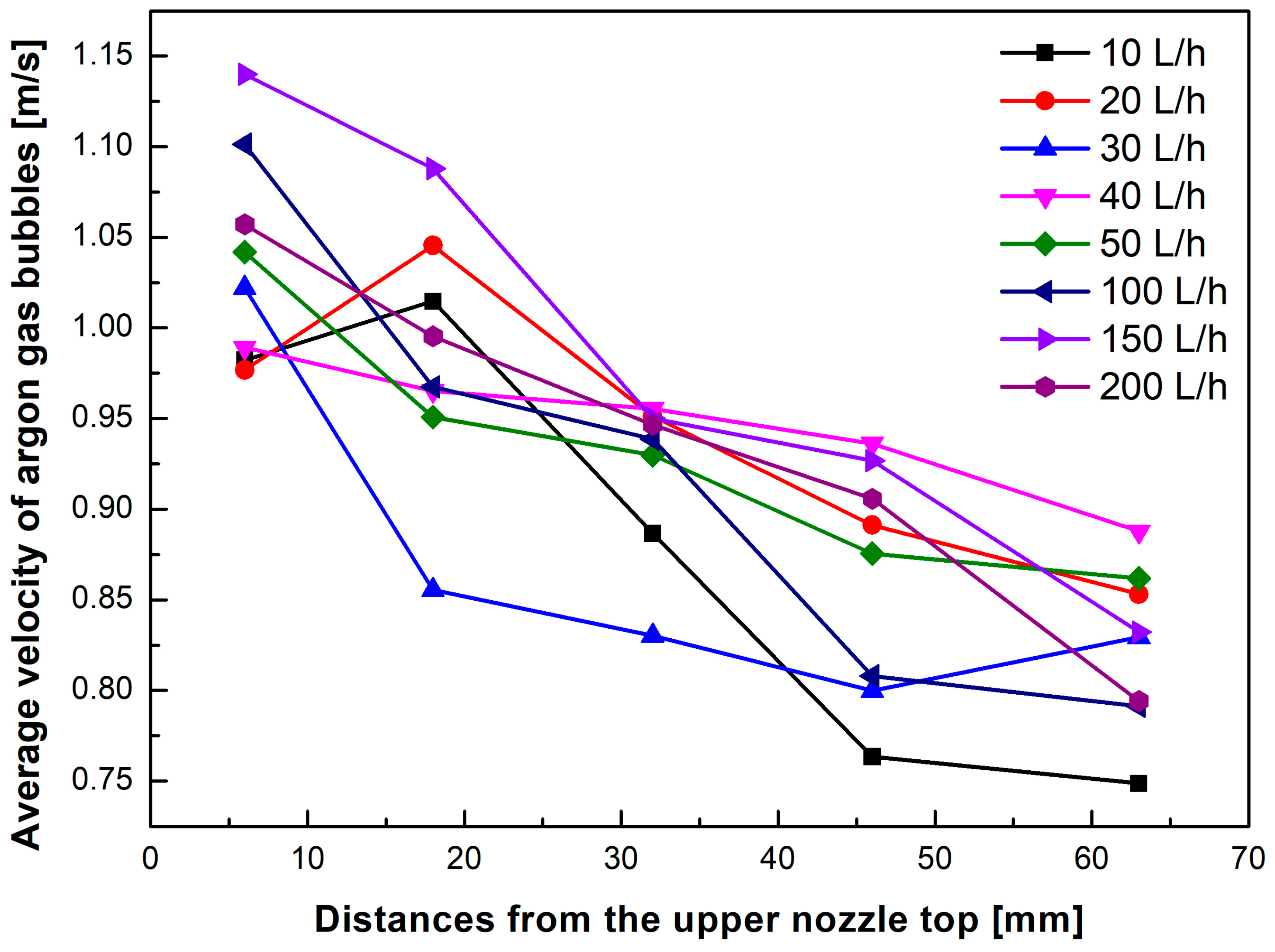
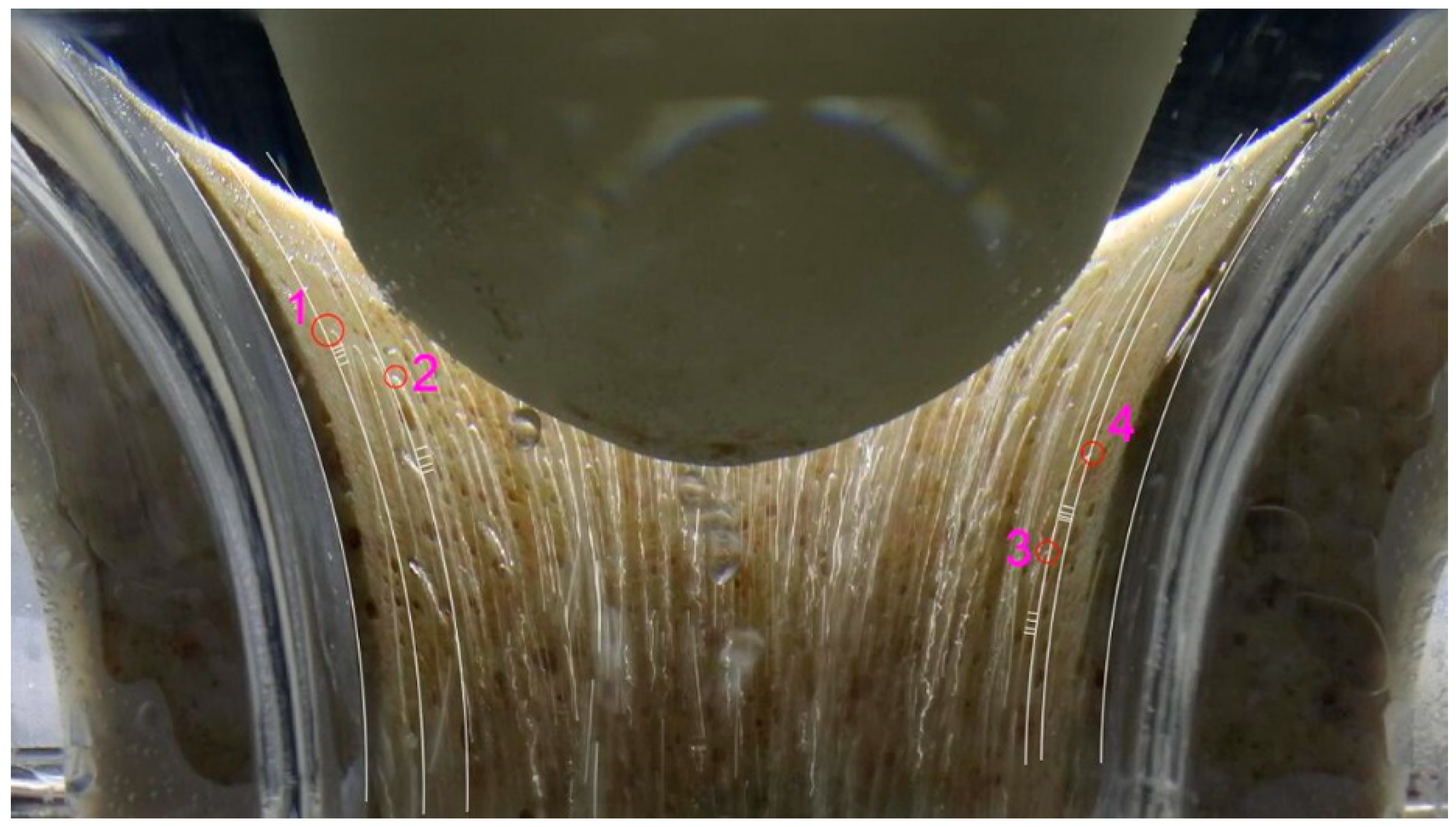
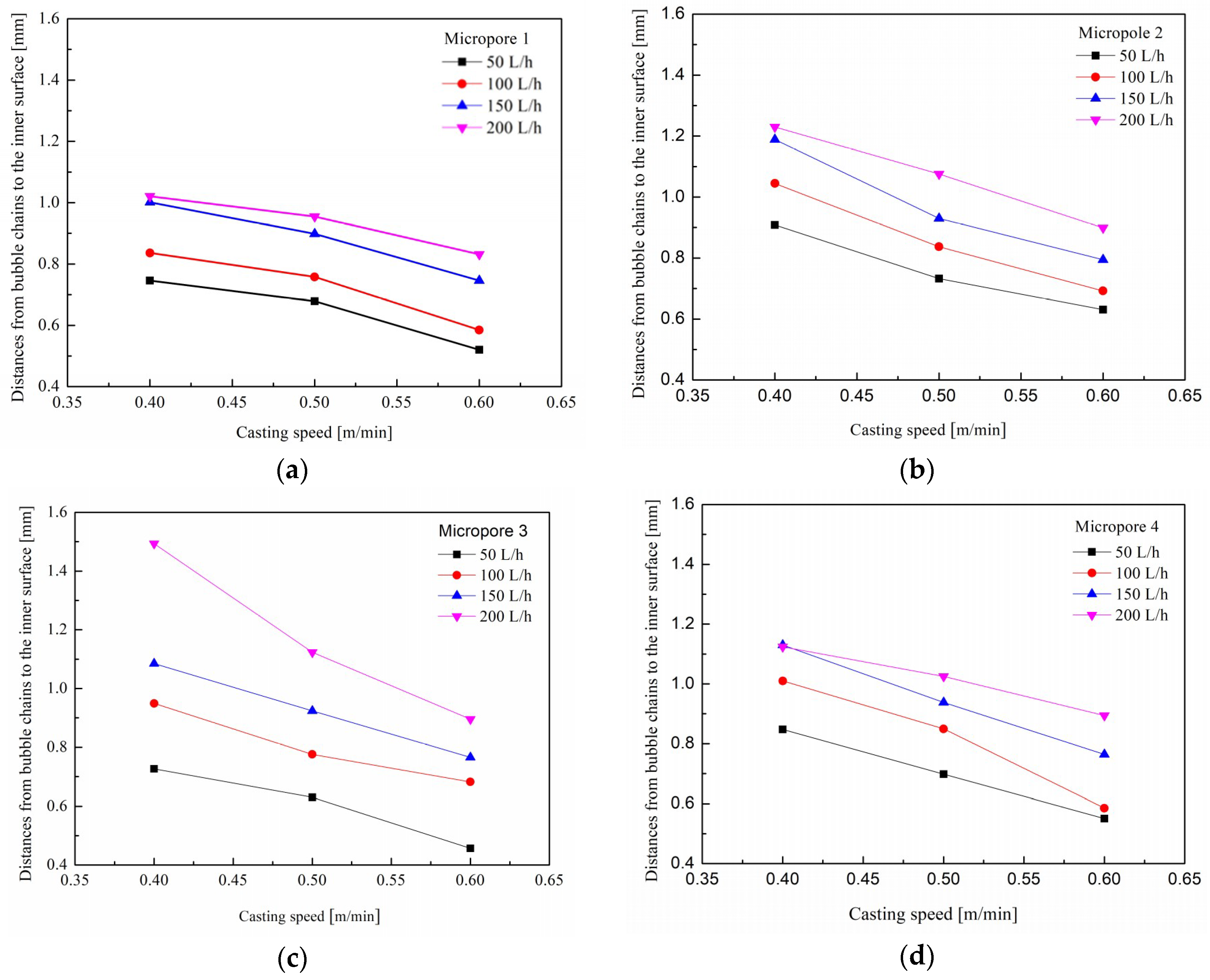
| Case | Actual Process Conditions | Water Model Parameters | ||
|---|---|---|---|---|
| Casting Speed, m/min | Argon Flow Rate, L/h | Water Flow Rate, L/h | Argon Flow Rate, L/h | |
| 1 | 0.5 | 120–180 | 6000 | 8, 16, 24, 32, 40, 50, 100, 150, 200 |
| 2 | 0.4 | 4800 | 50, 100, 150, 200 | |
| 3 | 0.6 | 7200 | 50, 100, 150, 200 | |
© 2018 by the authors. Licensee MDPI, Basel, Switzerland. This article is an open access article distributed under the terms and conditions of the Creative Commons Attribution (CC BY) license (http://creativecommons.org/licenses/by/4.0/).
Share and Cite
Li, Y.; Cheng, C.; Yang, M.; Dong, Z.; Xue, Z. Behavior Characteristics of Argon Bubbles on Inner Surface of Upper Tundish Nozzle during Argon Blowing Process. Metals 2018, 8, 590. https://doi.org/10.3390/met8080590
Li Y, Cheng C, Yang M, Dong Z, Xue Z. Behavior Characteristics of Argon Bubbles on Inner Surface of Upper Tundish Nozzle during Argon Blowing Process. Metals. 2018; 8(8):590. https://doi.org/10.3390/met8080590
Chicago/Turabian StyleLi, Yang, Changgui Cheng, Minglei Yang, Zhixuan Dong, and Zhengliang Xue. 2018. "Behavior Characteristics of Argon Bubbles on Inner Surface of Upper Tundish Nozzle during Argon Blowing Process" Metals 8, no. 8: 590. https://doi.org/10.3390/met8080590





